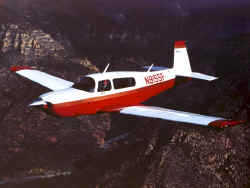Slow Light for the Rest of Us

Slowing light may be easier than you think. Physicists who recently slowed a light signal to a glacial 17 m/s using the exotic state of matter known as a Bose-Einstein condensate (BEC) received tremendous attention, but now a team demonstrates how to slow light on the cheap. They show in the 28 June PRL that an ordinary gas of heated rubidium atoms can slow light signals almost as well, to just 90 m/s–more than a million times less than the speed of light in air or vacuum. The new concept should make a wide range of advanced optics experiments more feasible and could also be useful for devices.
George Welch of Texas A&M University in College Station says he was “in awe” of the recent experiment, “but most people don’t make Bose-Einstein condensates in their labs–that requires several hundred thousand dollars worth of equipment.” He and his colleagues realized that the basic technique, known as electromagnetically induced transparency (EIT), could be optimized to work with a less expensive set-up.
In EIT a laser manipulates the quantum states in an opaque cloud of atoms and makes them transparent to a narrow range of wavelengths of light. According to electromagnetic theory, this narrow transmission band leads directly to an index of refraction that depends strongly on wavelength in this range, although in a low-pressure gas it may not stray far from the vacuum value of one. (The index of refraction gives the “phase velocity”–the speed at which pure sine-wave light beams travel.) Several years ago researchers demonstrated that the wavelength-dependent phase velocity causes the light’s “group velocity”–the speed at which energy and all signals travel–to slow by more than one hundred times. (More explanation of this effect.)
Welch and his colleagues knew that by narrowing the transmission band in their heated rubidium gas, the light would slow even more dramatically. The group velocity went down to 90 m/s –slower than many propeller-driven airplanes–so that a pulse of light took one fourth of a millisecond to traverse the inch-long gas cell, rather than zipping across in a fraction of a nanosecond. Welch says the long interaction time between the light and the atoms can lead to extremely sensitive experiments in nonlinear optics, where measurements of light interacting with matter normally require very high intensity lasers. Although a BEC can slow light signals even more than a rubidium gas, the total interaction time with the BEC is less–at least with current technology–because it fills such a small volume.
Many researchers in the field thought cold atoms, such as those in a BEC, would be required to reach group velocities this low, says Atac Imamoglu of the University of California at Santa Barbara, but “this paper clearly shows that’s not the case.” Under the extreme conditions of these experiments, a single photon can deviate from normal behavior and interact directly with another photon, a process Imamoglu says could be used in a quantum computer. He says other applications are also possible in developing communications systems that operate entirely with light, without the need to convert to electrical signals. Lene Hau of Harvard University, part of the team that recently slowed light in a BEC, points out that although hot gases are easier to produce, a BEC can slow light “orders of magnitude” more and allows more flexibility in the geometrical arrangement for future experiments.


